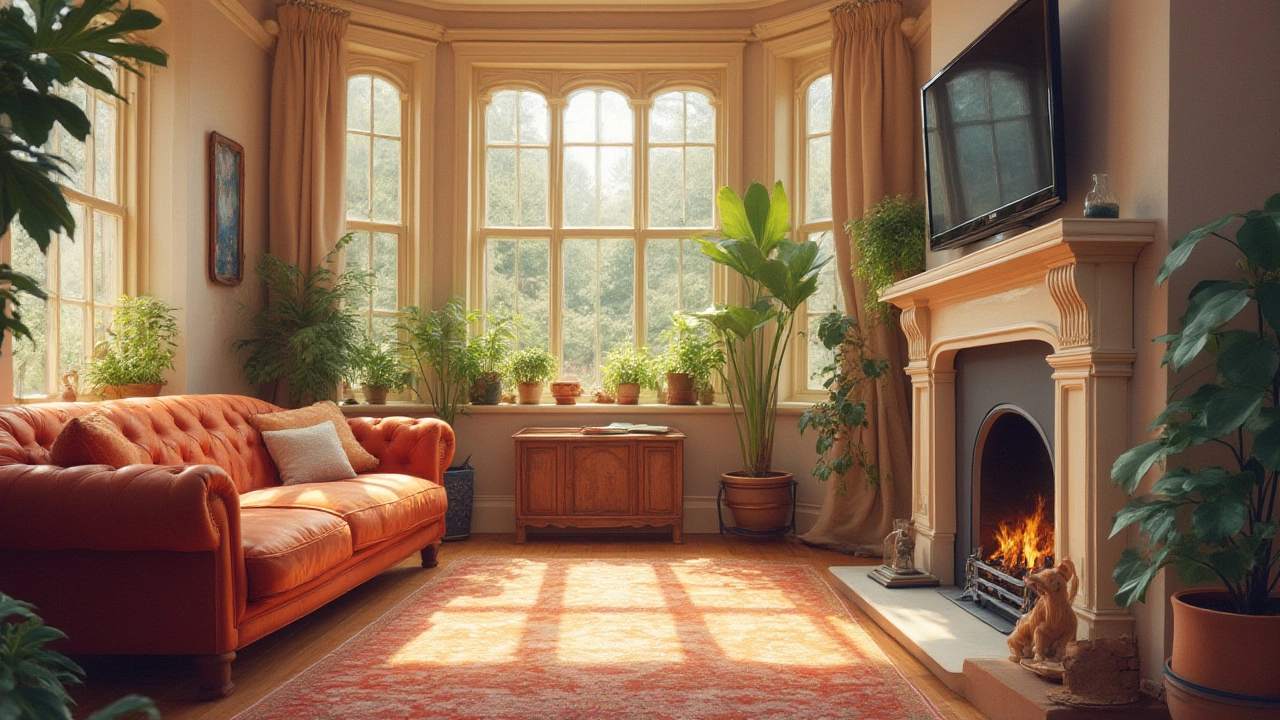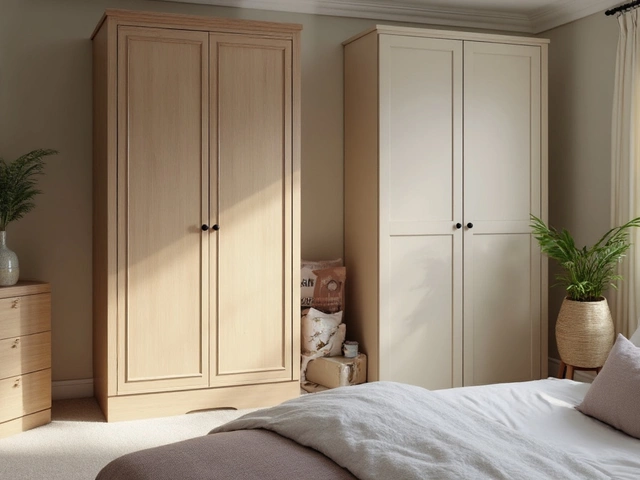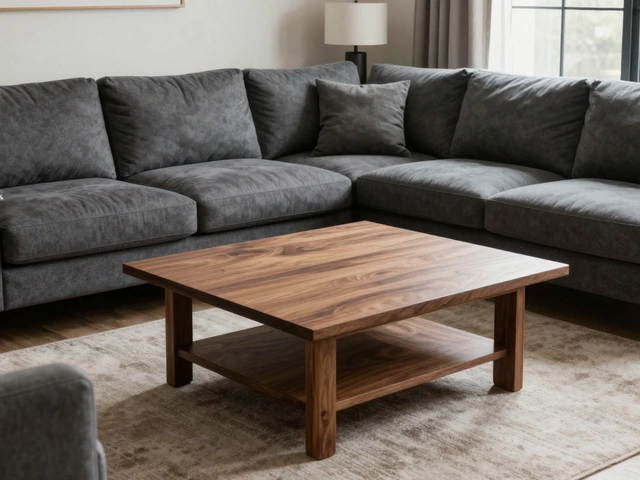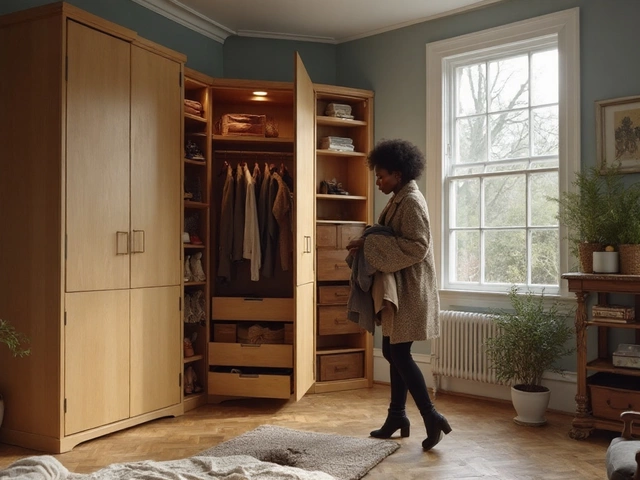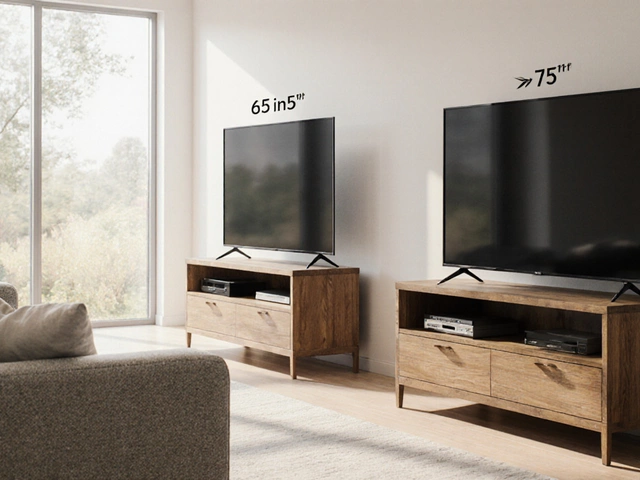Sunlight streaming in, a family sprawled across the couch, and the TV flickering away in the background—sounds cozy, right? But if your TV sits in the wrong spot, your living room can go from sanctuary to eye-straining nightmare. The truth is, lots of people end up sticking their screens wherever there’s space, then wonder why movie night feels awkward or the room never quite looks put together. Turns out, scientists and interior designers have found some classic mistakes that mess with comfort, style, and even your TV’s lifespan.
The Biggest Mistake: Mounting Your TV Above the Fireplace
The classic TV-over-the-fireplace setup gets tons of love on social media. Scroll through Pinterest, and you'll see those cozy, staged rooms with the screen glowing above crackling flames. But let’s be real: this is the most common spot that can seriously backfire. Here’s why.
First, there’s the heat. Even with a well-sealed fireplace, consistent use means hot air rises directly toward your television. Manufacturers like Samsung and LG have clear warnings in their manuals: avoid placing TVs above sources of heat, or you risk shortening the lifespan of the electronics inside. A Consumer Reports test found that temperatures above 37°C (about 100°F) can damage sensitive screen components, and a roaring fireplace can pump it up well beyond that, even a metre up.
Second, neck pain. Ergonomics experts say your eyes should naturally rest with the centre of the screen at, or just below, your line of sight when you’re sitting. If you’ve ever craned your neck in a front-row cinema seat, you know how quickly "epic" turns into "aching." Raising your TV higher forces you to tilt your head up for hours—bad news for your cervical spine. Chiropractors in Auckland regularly treat Netflix junkies with TV-induced neck cricks.
A third problem? Glare. Fireplace mantels often face big living room windows. Combine the glossy glass of most flat screens with that sunlight, and you get reflections that make even 4K movies look washed out. No settings trick or anti-glare coating fully solves the midday sun blasting right into the TV’s surface.
- Heat damage cuts TV life by up to 20%, according to a 2022 LG manufacturer’s notice.
- Wall-mounting above a mantel often puts the centre of a 55" TV nearly 40cm (about 16 inches) above best ergonomic height for lounging.
- Placement above the fireplace can make wiring (power, HDMI) trickier, leading to visible cords and pricy installation.
So unless your fireplace is non-functional or purely decorative, skip this "designer look." There’s always a better spot.
Facing the Light: Don't Put Your TV Opposite Windows
Your living room windows might be your favourite feature—until they turn your TV into a mirror. Placing a TV directly opposite a window guarantees daytime headaches. You can sit down with popcorn, only to end up staring at your own reflection, the trees outside, or your cat walking through the garden. That’s not exactly immersive.
The problem is physics. Sunlight—or even diffused daylight—hits the screen and bounces straight back into your eyes. TV screens are designed to be bright for a reason, but that’s not much help if you’re fighting with a sunbeam. Back in 2019, Consumer NZ found that over 30% of Kiwis had issues with TV glare in their main living rooms, and Auckland homes with big floor-to-ceiling windows were especially tough to get right. Even OLED panels, with their deeper blacks, can reflect so much light that contrast suffers.
- Glare ruins colour accuracy and makes dark scenes impossible to watch without blackout curtains.
- LED, QLED, and OLED all struggle equally in direct sunlight, though "matte finish" TVs help a bit—just not enough.
- Some TV owners use polarizing filters or anti-reflection films, but these are expensive and can slightly change the image quality.
If you can, angle the screen away from large windows or use heavy curtains and blinds. Even a small shift—rotating the couch or the TV stand just 10-15 degrees—can go a long way. For renters or homes with fixed layouts, this might mean experimenting a bit, but your eyes will thank you.
| Placement | Common Problem | Possible Fix |
|---|---|---|
| Opposite window | Glare/reflection | Use blackout curtains, reposition TV, or rotate furniture |
| Above fireplace | Neck strain/heat damage | Mount lower, choose another wall |
| Next to entrance | Foot traffic distracts | Move away from thoroughfares |
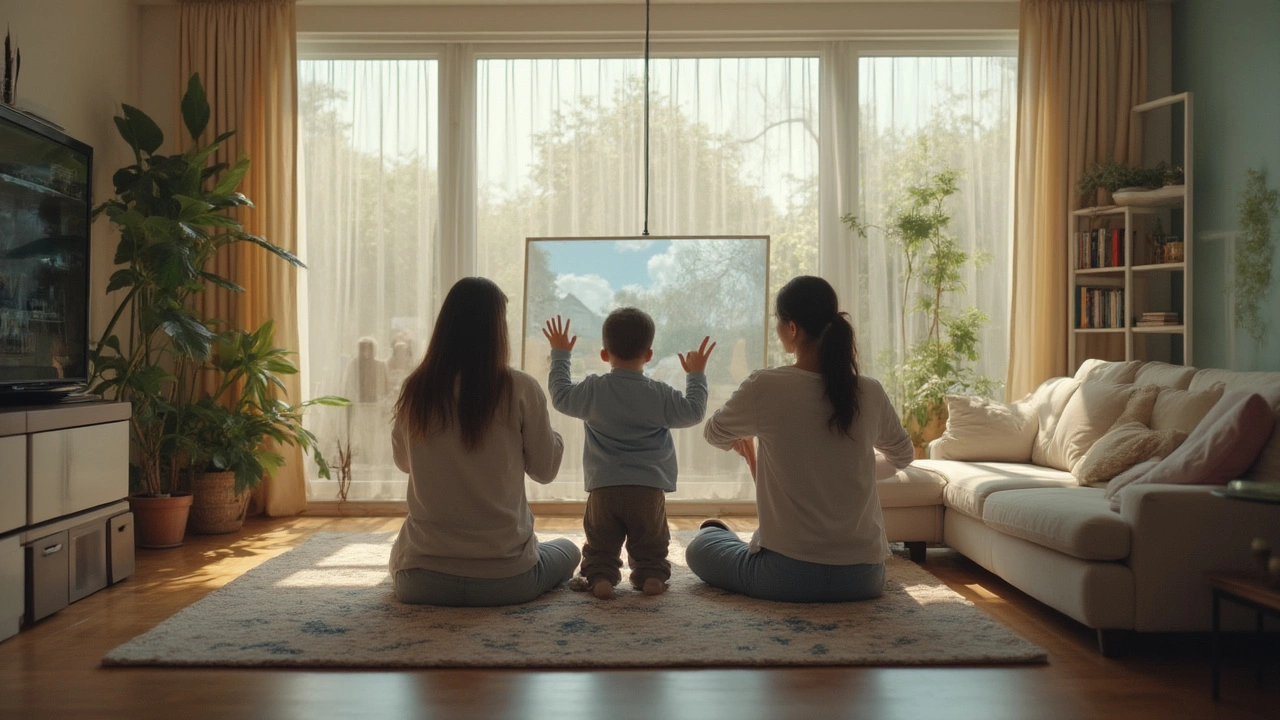
Avoid High Traffic Zones and Corners
Your living room might be a maze of entrances, exits, and places people walk through. Putting your TV right where everyone passes by sounds harmless—until you find your focus yanked every time someone enters or leaves. TVs facing entryways, hallways, or doors become focal points for interruptions. In shared flats around Auckland, this is a classic “didn’t think that through” move that makes movie nights feel like traffic intersections.
Corners seem tempting when you’re tight on space, but most TVs look awkward jammed at a diagonal. The result? Weird, angled viewing. Sound bounces strangely, too, making dialogue harder to catch unless you shell out for a fancy surround-sound system. And if you’re mounting shelves or cabinets near the TV, corners leave little room for balanced decor. Even cabinet doors might bump into your screen if you’re not careful.
There’s also the safety issue. In homes with kids or pets, TVs near walkways or corners can take a hit. New Zealand’s Accident Compensation Corporation once reported that flat-screen TV tip-overs sent nearly 600 young kids to hospital between 2018 and 2022—mostly from TVs perched on unstable furniture or squeezed into odd spots.
- Edge-of-room TVs are prone to accidental bumps and falls.
- Traffic-zone placement distracts viewers and ruins immersion.
- Corners often compromise picture and sound quality.
Do yourself (and your living room) a favour. Pick the calmest wall—one with fewer passersby, away from doors or direct foot traffic. A solid, central spot can make a world of difference.
Too High or Too Low: The Ergonomics of TV Height
TV height probably isn’t the sexiest topic, but get it wrong, and you’ll feel it every single night. The golden rule: the centre of the screen should land at your seated eye level. That means, for most couches, the ideal centre height is about 1.05 metres (42 inches) from the floor. Get out the tape measure—eyeballing it rarely works out right.
There’s a science to it. Studies out of the University of Otago on visual ergonomics found that neck flexion greater than 15 degrees for long periods leads to increased fatigue and headaches. The farther above (or below) eye level, the worse it gets. Sit too close and look up, or perch the TV on a high shelf, and soon you’re rubbing your neck—not relaxing.
Wall mounting can help, but only if you plan it out. Some people are tempted to tuck their TV up high to "save space" or "keep it safe from kids," but that just moves the comfort problem to your upper back and shoulders. A TV plunked on a low coffee table points too far up, straining your eyes especially in dark rooms.
- Most people watch TV from between 2 and 3.5 metres away (6.5 to 11.5 feet).
- The sweet spot: centre of the TV at eye level from your favourite seat—usually between 95 and 110 cm from the floor.
- TV can be 10-12 degrees below eye level; above eye level, as little as 5 degrees can cause discomfort if watching for hours.
Before drilling holes or buying that fancy stand, measure your main seating height and mark where your eyes land when relaxed. Mock it up with cardboard if you need to. Your neck will thank you.
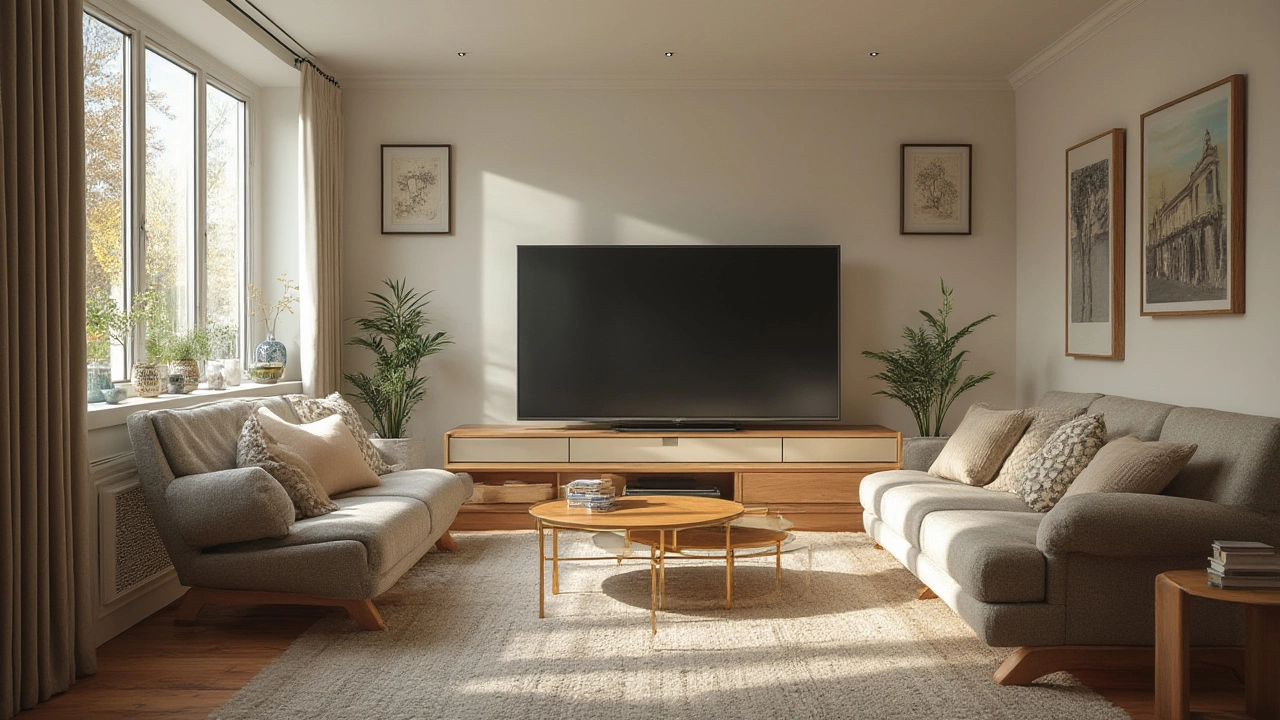
Style vs. Function: The Perils of Hiding or Cluttering Your TV
The modern trend is to hide your TV—pop it behind a sliding panel, disguise it as art, or squeeze it into a wall of open shelving. It’s clever, but it comes with pitfalls. TV cabinets with big doors usually have poor ventilation, and the electronics inside can overheat. Studies from TV repair businesses in New Zealand show that TVs in enclosed cabinets break down twice as often, just from built-up heat. There’s a reason why most TV manufacturers recommend a few cm of clear space all the way around for airflow.
Another trap: crowding your TV with shelves and knick-knacks. Every item nearby makes the screen feel dwarfed or distracts you from the action. Watching Formula 1 on Sunday shouldn’t mean fighting for focus between screens and a row of porcelain cats.
You might be tempted by those "media walls" filled with books, plants, or speakers. While a bit of flair is great, packing in too much causes visual overload. The loudest design advice from Auckland’s top home stagers? Less is more. Leave at least 10 cm of space on all sides of the TV and try to keep the wall simple. If you must display items, keep them low and subtle.
- Poor ventilation means reduced TV life (ventilation is especially important for larger and newer OLED/QLED models).
- Cluttered walls make rooms feel chaotic and reduce TV enjoyment.
- TV "lift" cabinets look slick but need regular maintenance—hydraulic failures aren’t fun when you’re mid-movie.
Balance style and experience. The TV doesn’t need to be the sole focus, but don’t stuff it into obscurity either.
Ready to move your TV? Remember these tips and avoid the big mistakes. Your living room will feel more relaxed, movies will look sharper, and your neck—and your electronics—will thank you. Getting TV placement right is a small thing with a big payoff.
